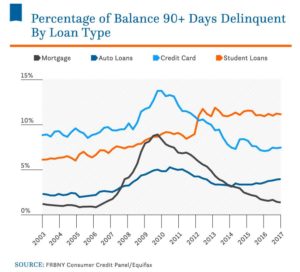
I had someone request I add a link to their site to an archived TLAT newsletter. I looked at it and the statistics on their site are worth passing on.

Tom's Blog on Life and Livingness

I had someone request I add a link to their site to an archived TLAT newsletter. I looked at it and the statistics on their site are worth passing on.

Prominence-interpretation theory helps determine what shapes users’ perceptions of a web site’s credibility.
https://www.nngroup.com/articles/prominence-interpretation-theory/

Another reason why I do not trust putting all my data on someone else’s cloud service.
https://www.itnews.com.au/news/eight-more-spectre-style-flaws-found-in-intel-processors-490279

If you have a business, here are some good tips.
http://www.sitepronews.com/2018/04/30/10-social-media-mistakes-to-avoid-at-all-costs/
My accountant forwarded me this from Andreyev Lawyers:
When was the last time you posted a letter, printed out a photo, rang up your share broker, or visited a bank branch? Chances are, not that recently. This is because more and more of our lives are spent online, and hanging off digital cloud services.
But what would happen if you lost mental capacity or died? While your physical life may be well provided for, chances are your digital life is seriously at risk.
It is critical that you plan ahead so that access to your digital property, your passwords, online accounts and electronically-stored pictures and information can continue if you become incapacitated or die. By planning ahead, you can ensure full access to your digital property for your family and business partners. This will keep administration costs down, and ensure your valuable and significant digital property is protected.
Compared with physical property, the digital property has five additional and significant obstacles for your family and your legal personal representatives to overcome:
Passwords;
Account ownership and licensing;
Data encryption;
Laws regarding unauthorised access to computers and data services; and
Data privacy laws.
These obstacles can make it almost impossible for someone to access your digital property, even if you intend for them to be able to. You need to plan ahead.
How can you plan ahead?
Step 1: Make a list of all your digital assets and store a hard copy with your Will.
Regularly update this list of assets, accounts and passwords.
Step 2: Check the terms of the service agreements for each of your accounts.
You are looking to see if the terms specify what happens to the account on your death, to see if you actually own anything your beneficiaries can inherit. Many services only offer a limited ‘use right’ while you are alive.
If the service provides you with an option to ‘memorialise’ your account after death (e.g. Facebook), ensure your executors know your wishes and any particular message you would like to leave to friends or followers.
Step 3: Make a list of your important passwords, online accounts and digital property.
Specify what should be done with each item on your list if you become incapacitated or die. Keep your list up to date, store it in a secure location, and let your family and legal personal representatives know how to access it.
Step 4: If you store valuable or significant digital property in the cloud, back up your data to a local computer or local storage device on a regular basis.
Your legal personal representatives and family will be able to access the local device without having to deal with third parties who will be bound by privacy and data protection laws.
Step 5: Work with us to update your Will, Enduring Power of Attorney and other estate planning documents to address digital property.
At a minimum, this means your estate planning documents should:
Specify your wishes about the distribution or deletion of your digital property;
Provide your consent to divulge the contents of your electronic communications to your legal personal representatives;
Authorise your legal personal representatives to access your computing devices, storage devices, accounts, and data; and
Permit your legal personal representatives to bypass, reset or recover your passwords on your computing devices and to decrypt your encrypted data, if desired.
What should you do with your master passwords and codes?
You don’t have to list your passwords in your estate planning documents. This would be a serious security risk. Instead, store your passwords securely and let your legal personal representatives know how to access them. We are able to store your top-level passwords and codes securely and in a manner that will only allow access should you become incapacitated or die.
 For quite some time now I have received on average about a call a week from these scammers . Before I hang up I tell the person calling that they are working for a scamming company and that they should quit and get an honest job. I received this from my bank about the scam.
For quite some time now I have received on average about a call a week from these scammers . Before I hang up I tell the person calling that they are working for a scamming company and that they should quit and get an honest job. I received this from my bank about the scam.
Dear Thomas,
At St George, helping our customers avoid falling victim to scams is our top priority. We’d like to make you aware of a current phone scam targeting Australians.
The scam involves a caller posing as an employee of a large telco, utility provider or computer company. The caller will usually advise they are calling you because your PC has malicious software, help is needed to catch a criminal, or to recover an outstanding debt owed to a government body. Callers may become quite aggressive or threaten you with prosecution if you do not comply with their request.
Thomas, we strongly recommend you simply hang up if you receive this type of call. If you believe the call was legitimate, we recommend you return the call to the company using a trusted phone number found in the yellow pages or on the company’s website.
How this type of scam works:
The caller will generally ask you to install a piece of software onto your PC. The technical name is ‘remote access software’ and this software allows information, or even control of your computer to be shared remotely with another user. Once the software is installed, the other user may attempt to control your computer without your permission or knowledge.
The caller will ask you to sign into your Internet Banking to check your account balances, return deposited funds, pay a fee for their service or even purchase gifts cards. At this point you may not know the caller is controlling your computer.
You will now have an increased balance in your transaction account, giving the false impression that a deposit has been made. Callers will generally ask you to return this via internet banking, a money transfer agent or in cash.
Before making any payments or returning funds to the caller by internet banking, credit cards or cash, please thoroughly check all of your account transactions, including your credit cards. In reported cases of this scam, customers have had funds transferred unknowingly between their own accounts by the caller.
What should I do?
Remember, do not disclose your Internet Banking logon details or St.George Secure Code sent to your mobile to anyone.
Share information about these types of scams with your friends and family, especially those who may be more vulnerable to this type of crime.
Stop and consider the caller’s request – would the company which contacted me ask me to do this? It’s OK to ask for a second opinion from a friend or family member if someone contacts you unexpectedly, especially when the caller asks you to keep this a secret from anyone.
Register for Government alert services like staysmartonline.gov.au to keep up to date with current scams.
More information?
For further information please visit stgeorge.com.au/scams
Thank you for using St George Internet Banking.
Sincerely,
The St George Internet Banking Team
This is a potentially useful article from my accountant, Tony Cammarata at Prudential Partners.
Would you pay top dollar for a car that doesn’t have registration papers, a service history, keys, an ignition that works or a motor that runs smoothly? We doubt it.
On the flip side, you’d likely pay extra for a car if the owner went to the trouble of cleaning it out and polishing its paintwork on the day of sale.
It’s no different for businesses. Why would anyone pay top dollar for a business that has not been serviced or tidied up before being put on the market?
Before putting your business on the market, you need to put your thinking cap on. If you were a potential purchaser, what would you criticise about your business?
Now you need to do as much as you can to resolve those issues. If you don’t resolve them, don’t be surprised if they come up in negotiations as the basis for a purchaser offering a lower price.
Here’s where we can help! We have a ‘shopping list’ of common mistakes that business owners make when selling a business. This article shares our insights with you so that you don’t fall into the usual traps.
1. Corporate records are incomplete
Having poorly maintained or incomplete corporate/entity records is a classic way to put off purchasers (or their advisors).
We’re talking about things like member’s registers, director/member resolutions and share transfers. Sometimes they are missing, maybe they were never signed. This can make purchasers uneasy, and it demonstrates bad business ‘housekeeping’. It leaves purchasers wondering what else hasn’t been properly documented.
If you operate your business through a trust structure, then pay attention. Incomplete records are a common problem for businesses that involve trusts (especially unit trusts). A trust may hold some of the business assets or be the main operating entity. There is no central register for trusts like the ASIC register for companies, so trusts are only as good as their internal records. If the records are out of date or incomplete, the details of the current trustee or the recorded unit holdings may be altogether wrong.
We suggest that you undertake an audit of the corporate/ entity records for your business early. Certainly before putting your business up for sale. This will give you time to locate and collate documents that already exist and to reconstruct missing documents as appropriate.
2. Missing (or badly drafted) employment contracts
For most businesses, their team represents a great deal of the value. Often a purchaser wouldn’t consider taking on a business without the staff that know how to run it. Yet we see so many vendors –probably more than half – try to sell a business without having any employment contracts in place.
Even when there are contracts, they are often outdated, inadequate or just plain unlawful. There is no faster way to scare off a purchaser than having them think they are inheriting claims for unpaid employment entitlements or underpayment.
We recommend having your employment contracts (or at least those for your key staff) reviewed before putting the business up for sale. Any issues can be fixed up before potential purchasers are on the scene. Post-employment restraint and non-compete provisions could be included where appropriate to give the purchaser more comfort – and get you more money.
3. The lease expired (or worse, no lease)
If you value the location of your business, it is likely purchasers will, too. If your lease isn’t in good shape with plenty of time left on the clock, you likely won’t get top-dollar for your business.
The first thing to do is to make sure you actually have a lease in place. If you have a good relationship with your landlord or have been in the same premises for a long time, you may find that your last lease expired years ago. It’s a common oversight. Generally, the time to negotiate a new lease is before the landlord catches wind that you are thinking about selling, as they may not offer such favourable terms to someone else (i.e. your purchaser).
If you don’t have a lease, now is the time to insist on one. You might have been willing to rely on a handshake, but your purchaser won’t be. Ideally, the lease should be for a relatively short initial term (i.e. 2-3 years), with a few rights to renew for a similar period. This will give your purchaser the most flexibility. And more flexibility for your purchaser means more money for you!
4. Intellectual property ownership
You can’t expect a purchaser to pay big bucks for your business/product name or logo if you don’t own the registered rights to it. You need to make sure all your intellectual property ducks are in a row. This is where registered trademarks come in.
Registering your name or logo as a trademark with IP Australia ensures that you have undisputed ownership rights to that branding. The certainty of ownership equals value to a potential purchaser. And really all you are doing is making the most of what you have already got – you’ve already put the hard work in by developing and promoting the branding.
We’ve seen some awkward situations where the purchaser uncovers that the seller hasn’t actually owned the intellectual property rights it was trying to sell! Either the IP is owned by the individual personally or by a related entity that was not intended to form part of the sale. This can cause all sorts of headaches – and it is worse the closer to the settlement that the ownership issue is identified. We recommend that the entity structure (including relevant asset ownership) be mapped from the outset, preferably via an easy-to-read diagram. Bonus: you can provide the diagram to your purchaser and their advisors during the due diligence period as an easy way to explain your structure.
Think of this process as a ‘tune-up’ for your business. Yes, it will take some planning and effort, but it will pay off by attracting more purchasers that can see immediate value. And that feeds directly into your ultimate goals: Getting the highest purchase price possible and taking a well-earned break!

It’s surprisingly simple, yet accountants suggest not enough business owners do it – often causing undue stress and difficulties down the track for business owners.
https://www.mybusiness.com.au/sales/2572-the-accounting-trick-you-ve-probably-overlooked

If you have a web page, worth reading…
http://www.sitepronews.com/2018/01/08/4-ways-google-changing-search-engine-results/